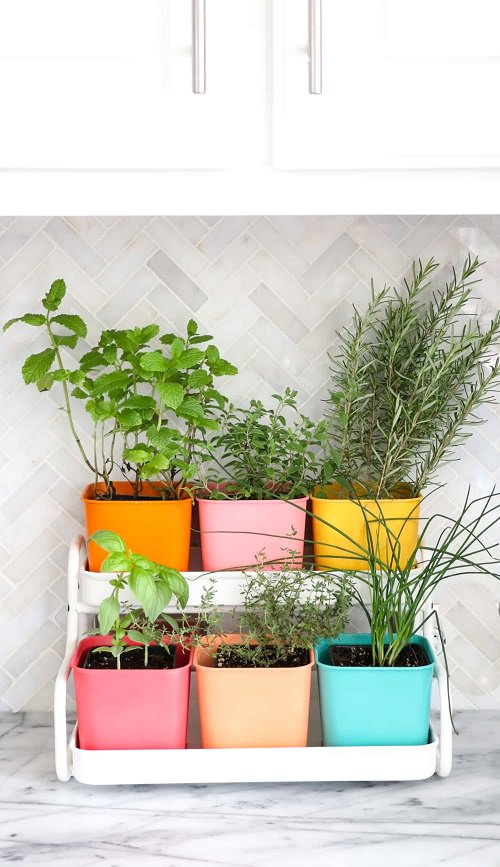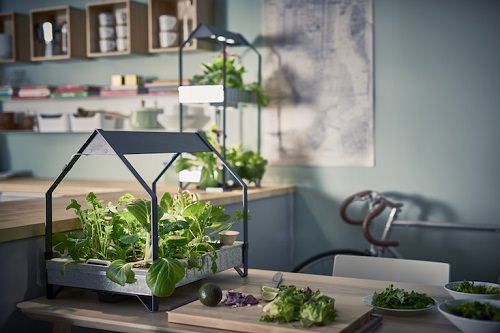- Like
- Digg
- Del
- Tumblr
- VKontakte
- Flattr
- Buffer
- Love This
- Odnoklassniki
- Meneame
- Blogger
- Amazon
- Yahoo Mail
- Gmail
- AOL
- Newsvine
- HackerNews
- Evernote
- MySpace
- Mail.ru
- Viadeo
- Line
- Comments
- Yummly
- SMS
- Viber
- Telegram
- Subscribe
- Skype
- Facebook Messenger
- Kakao
- LiveJournal
- Yammer
- Edgar
- Fintel
- Mix
- Instapaper
- Copy Link
The Importance of Kitchen Garden, especially in an urban home, is more than just getting fresh veggies. Find out all its benefits here!
The kitchen garden is miniature farming of vegetables and herbs. It can be a great source of nutritious and fresh veggies. Apart from garden beds, you can create one even in the patio, balcony, terrace, or even window boxes. Succession, intercropping, and vertical gardening are also finding great significance in kitchen garden ideas. The Importance of Kitchen Garden in a home are many! Let’s have a look!
Check out our article on growing a vegetable garden here
Importance of Kitchen Garden
1. Fresh Organic Harvest
The biggest perk of having your own kitchen garden is that you have access to fresh harvest, whenever you need it. It eliminates the hassle of rushing to the vegetable markets. The kitchen garden ensures inexpensive and nutritious harvest year-round. And, you can not deny the fact that homegrown vegetables are far tastier and chemicals-free.
2. Nutritious Diet and Detoxifies Body
Vegetables are loaded with several vitamins, fibers, and minerals that provide essential nutrition to the body and prevent numerous diseases and malnutrition. Leafy vegetables prevent iron deficiency like anemia. Herbs and spices are known for playing a vital role in detoxifying toxins from the body. Furthermore, herbs are easiest to grow and require lesser space. You can pick lemongrass, coriander, dill, rosemary, mint, basil, and thyme for growing in kitchen gardens.
3. Purifies Surrounding Air
Plants cleanse the surrounding air by absorbing carbon dioxide and releasing oxygen. Apart from cleansing air, they elevate the aesthetic appeal of the house.
4. Gives You a Hobby
Gardening is like a hobby for many. Due to a hectic lifestyle, people’s touch with nature is losing. Vegetable gardening will keep you grounded with nature.
5. Recycling of Vegetables and Plant Scraps
The leftover peels, unused vegetables, and shredded leaves can help you in making compost for further gardening. You can even create a compost trench with these vegetable remnants. And, if you are growing leguminous vegetables like beans, then it has added perk of naturally enriching the soil with nitrogen.
How to Plan a Kitchen Garden?
Choose a sunny location of your yard for creating the kitchen garden. If you don’t have much space, opt for container gardening. Any patio, balcony, or terrace will do the trick that receives 6-7 hours of sunlight.
- Remove debris and weeds and plow the garden thoroughly. Then, amend the soil with compost and cow dung manure before planting.
- It’s better to start seeds in pots with potting mix, and after a couple of weeks, transplant them to the garden. Especially, tomato, pepper, or eggplant prefer indoor planting, whereas carrot and radish can be directly sown outdoors.
- In gardens, water deeply twice a week, but reduce this rate during winters. For container plants, check the water consistency by poking a finger in the soil. If it looks dry, water well.
- Many vegetables like cucumber, tomatoes, beans, and gourds grow on creeping vines, so install stakes and trellis for them. You can even go for vertical gardening by using wall and railing planters.
- To avoid competition among plants for nutrients and water, always maintain a space of 18-36 inches between the rows or plant them in individual containers.
- You can also go for intercropping, in which some vegetables are grown together as companion plants, like maize, squash, and beans pair.
- A raised bed is a feasible option for creating a kitchen garden, as it facilitates easy maintenance.
What to Grow in Kitchen Garden?
There are so many vegetables that you can try for your kitchen garden. For instance, spinach, turnip, cabbage, coriander, broccoli, kale, garlic, cauliflower, and onion are the best vegetables that grow from October to February. Amarnath, tomato, chili, and bitter gourd dwell from March to June.
If you are a newbie in vegetables growing, then start with the easier ones like parsley, lettuces, spinach, tomatoes, peppers, eggplants, beans, cucumbers, and radishes that require comparatively less care. Whereas, if you have a green thumb, then consider going for cauliflowers, cabbage, carrots, and melons.
Note: Prefer heirloom or hybrid varieties for seeds or seedling for better chances of prolific growth.
- Like
- Digg
- Del
- Tumblr
- VKontakte
- Flattr
- Buffer
- Love This
- Odnoklassniki
- Meneame
- Blogger
- Amazon
- Yahoo Mail
- Gmail
- AOL
- Newsvine
- HackerNews
- Evernote
- MySpace
- Mail.ru
- Viadeo
- Line
- Comments
- Yummly
- SMS
- Viber
- Telegram
- Subscribe
- Skype
- Facebook Messenger
- Kakao
- LiveJournal
- Yammer
- Edgar
- Fintel
- Mix
- Instapaper
- Copy Link





